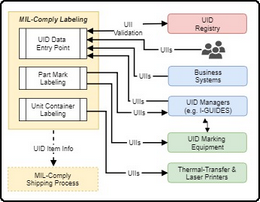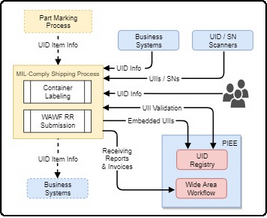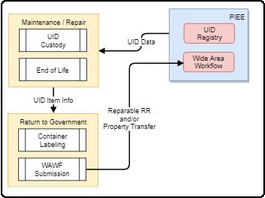Managing Impact of IUID and GFP Compliance The DOD’s Item Unique Identification (IUID/UID) initiative has revolutionized the military’s ability to keep track of what it owns. But it has also created substantial burdens on defense contractors that go far beyond just permanent part marking. The challenges created by IUID data management fall into four phases of item life cycle. •Part Marking – ensuring that Unique Item Identifiers (UII) are valid and unique (not currently in IUID Registry), while also collecting that data for shipment and other uses. •Shipping – which includes two distinct, but interdependent requirements for UID data: oMil-Std-129 container marking oSubmission of Receiving Report (RR) to WAWF oSubmission of RFID/UID data to WAWF, either as part of the RR or a separate Pack Update •Bonded Storage – during which the contractor is responsible for temporary storage of items it has sold to the Government, then later, shipment of those items to end users. •Maintenance and Repair - which requires IUID Registry transactions and special WAWF transactions. Contractors must first acknowledge custody to the IUID Registry of Government Furnished Property (GFP) that it is servicing. When shipping, UIIs are submitted again on a WAWF Reparable Receiving Report (RRR) or Property Transfer (DD1149) transaction. Adding items to the UID Registry or handling end-of-life events (e.g. scrapping and warranty replacements) is handled during this time. UID data is integral to all these processes, so it must be handled accurately and efficiently. MIL-Comply is a tightly integrated solution MIL-Comply’s modular licensing approach allows it to be applied specifically to the areas of greatest need and work with your existing systems. It can scale up as needs grow and adapt to process changes. |
|


